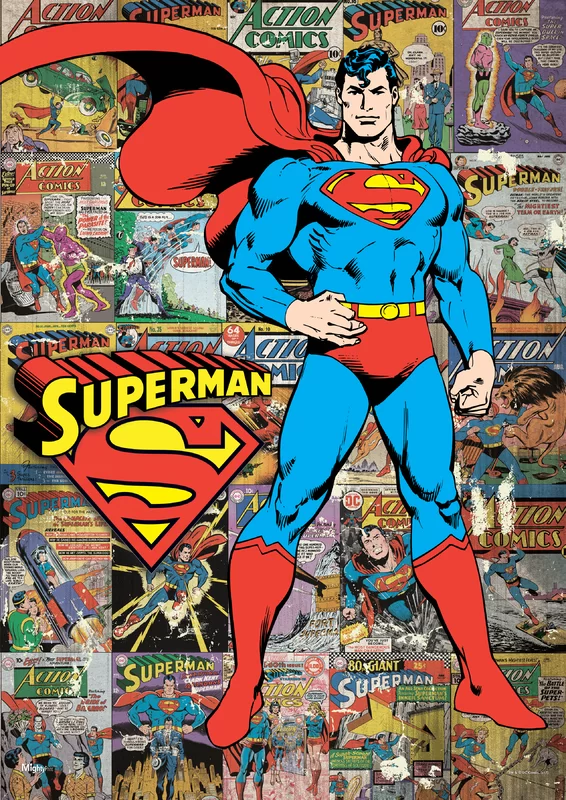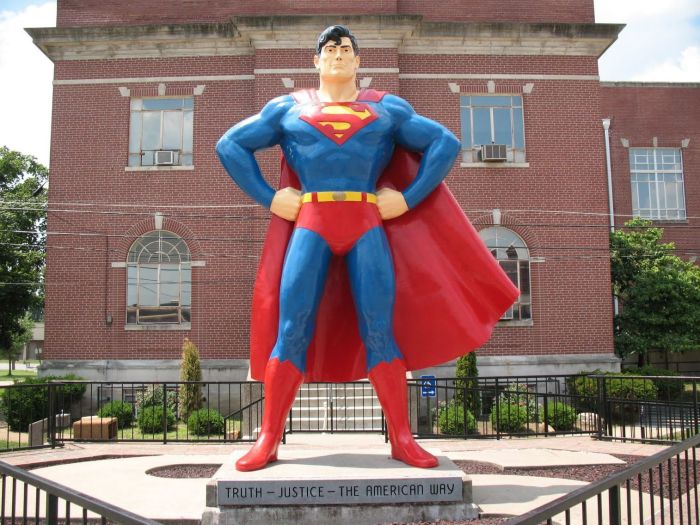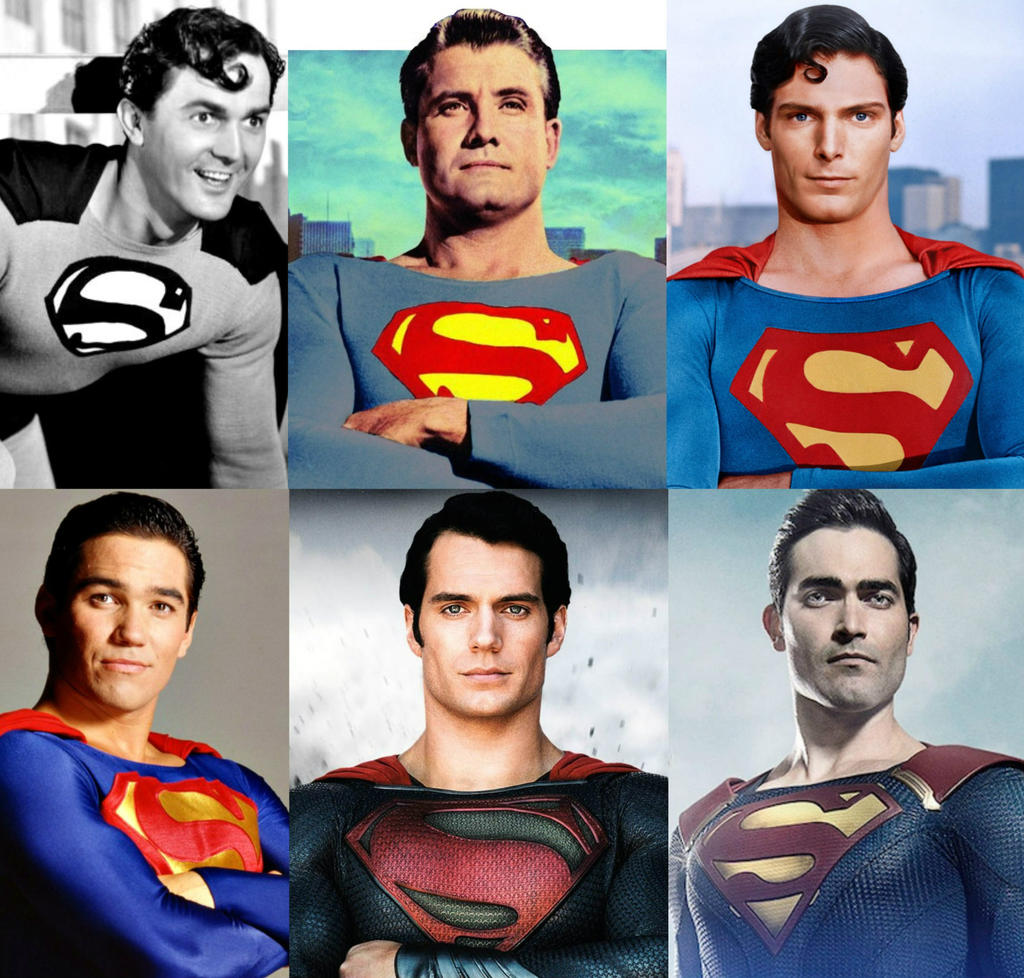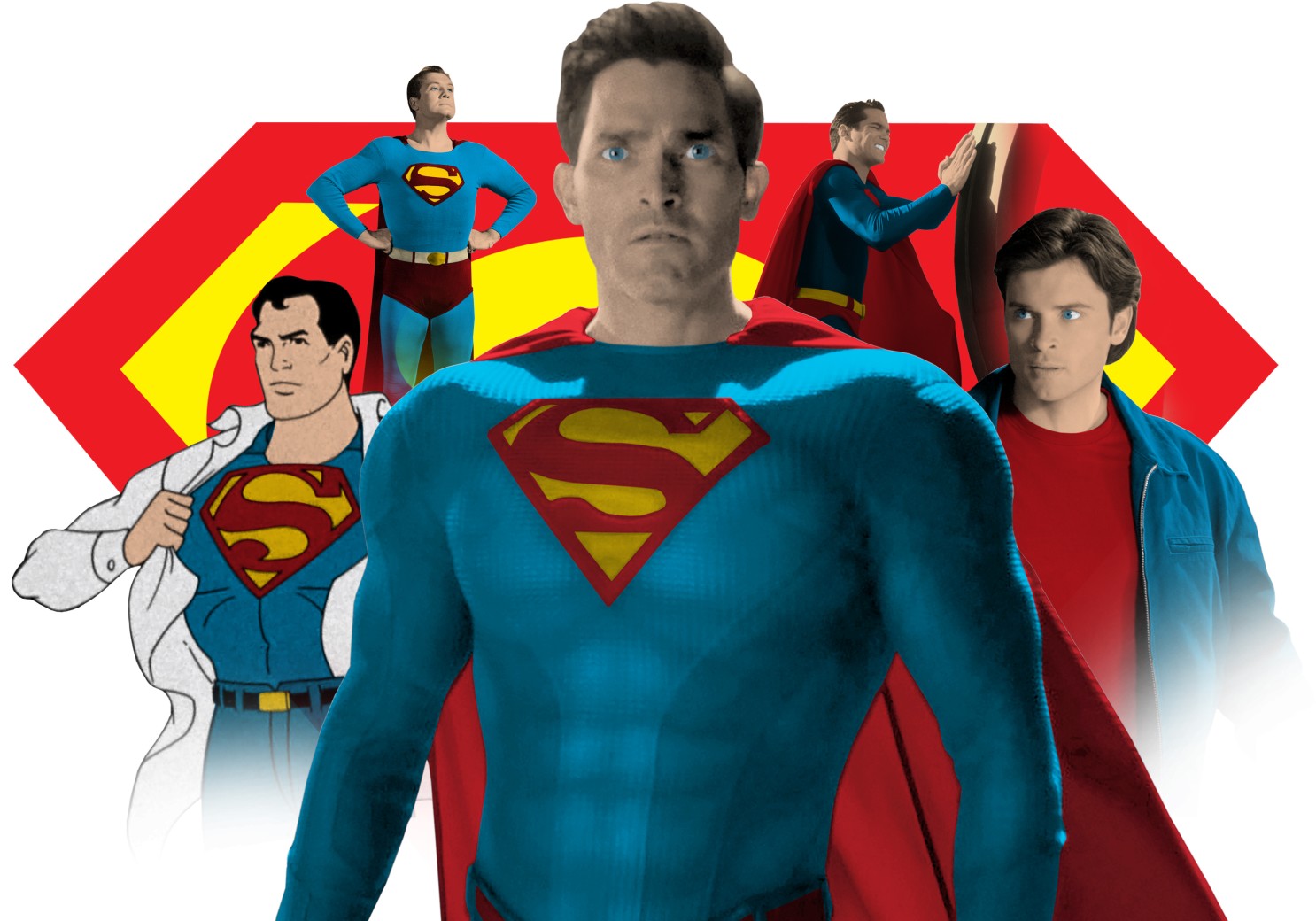
|
|
Superman: II
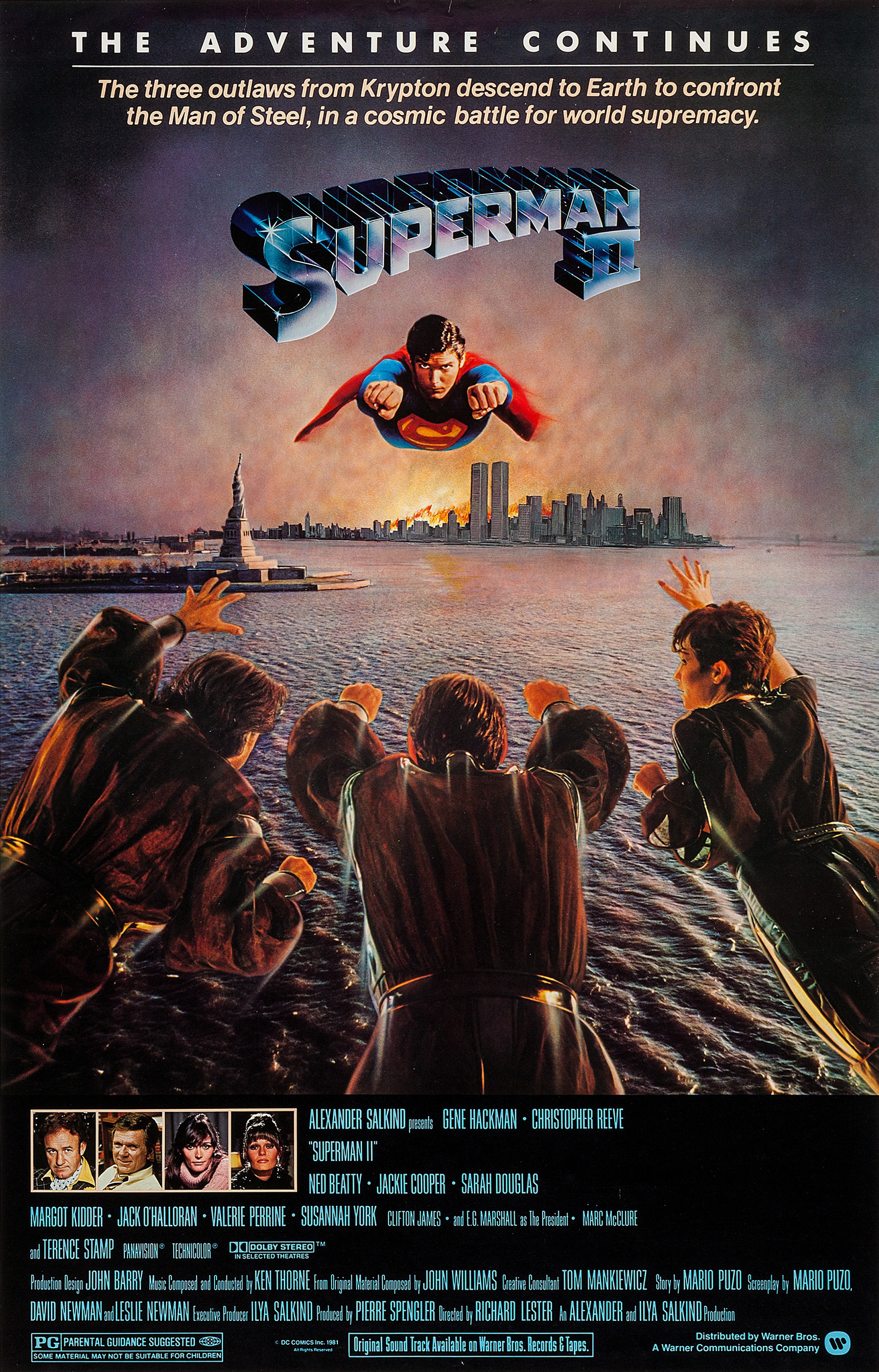
Superman takes an about-to-explode atomic bomb placed in the Eiffel Tower by terrorists and throws it into orbit. But this unwittingly sets free General Zod, Ursa and Non, the three Kryptonian villains imprisoned in the Phantom Zone by his father. Now finding they also have super-powers, they come to Earth where they proceed to bring the combined might of America to its knees. Meanwhile however Clark and Lois Lane have been assigned to go to Niagara Falls, posing as a honeymoon couple, to investigate a fraud scheme. There Lois inadvertently discovers Clark is Superman. The two realize their love for one another but in order to consummate it Superman must make the choice to sacrifice his super-powers. But doing so leaves him unable to stand up against the Phantom Zone villains.
Superman II is not a sequel in the sense that a sequel is usually made to cash in on the success of its predecessor. Producers Alexander and Ilya Salkind had had great success with their The Three Musketeers (1973) (which were incidentally directed by this film’s director, Richard Lester). They had originally planned to only make one film but Lester had shot so much film that the Salkind’s ingeniously decided to cut it in two and release two films, calling the other The Four Musketeers (1974). When they came to the making of Superman (1978), the Salkinds set out to intentionally shoot two films at the same time.
Alas it never quite worked out like that. Superman 1 proved to be an enormously problem-laden production where shooting overran and there were considerable tensions between the Salkinds’ and director Richard Donner. The Salkinds brought Richard Lester in an uncredited associate producer capacity to keep an eye on Donner during the shooting and it was Lester’s idea that shooting of Superman II be adjourned in order to concentrate on the completion of Superman 1 for its Christmas 1978 worldwide release date. At the point this decision was made approximately two-thirds of II had been shot (accounts of the percentage vary) and production was shut down and recommenced in the latter half of 1979.
Unfortunately between the release of Superman 1 and the recommencement of II, problems had escalated. Marlon Brando (who had received a record $3.5 million + percentages salary deal for I) filed a $50 million lawsuit against the Salkinds even before I had opened, charging they had failed to pay him for profits from the film. As the case dragged out in the L.A. courts it was decided to eliminate all of his scenes that had been completed for II. These were later reshot using Susannah York who had played Superman’s mother in the first film. And then in a controversial move early in 1979, the Salkinds fired Donner (Donner had been vocal in the press about his dislike of the Salkinds’ producing methods - one of his complaints had been the Salkinds’ wanting to make the film much more campy in tone) and replaced Donner with Lester. Citing sympathy with Donner’s removal, Gene Hackman declined to return or be further involved in II and the scenes he was in were either cut down or reshot using a double. [Margot Kidder had also been vocal about Donner’s firing and as a result was almost completely written out of the subsequent sequel, Superman III (1983)]. In the interim production designer John Barry, cinematographer Geoffrey Unsworth and special effects man Les Bowie had also died to further add to complications.
One of the things that the Salkind’s wanted and that Lester complied with was taking the series in a clearly more comic direction than the first film. (This is something that would reach a nadir in their subsequent entry, Superman III, which is arguably the worst of the series). Upon coming aboard Lester demanded a script rewrite, which was conducted by David and Leslie Newman who eliminated much of Donner’s attempt to craft the comic-book legend as an American myth. As a result many aspects of continuity that would have existed between the two films have been eliminated - in the original it is the missile that Luthor targets on California and Superman throws into space that releases the Phantom Zone villains; Lester cut that and inserts a whole new sequence about Superman throwing an atomic bomb planted in the Eiffel Tower by terrorists into space. In the original Superman loses his powers because he transgresses Kryptonian moral laws that bind him as a superbeing; here he willingly sacrifices them for love’s sake. There are also changes in the way Lois discovers that Superman and Clark are one and the same.
As far as one is able to ascertain the parts of the film that remain from the Donner version are all the scenes with Luthor, the fight in the diner and many of the climactic scenes in the Fortress at the end. Those which are specifically Lester’s are the central super-powered fight in the streets of Metropolis, the Eiffel Tower scenes, all the Susannah York scenes, and the scenes between Lois and Superman in Niagara Falls and the love scenes at the Fortress. Many of the other scenes are hybrids between material shot by both directors. Debates about how much of the final film is Donner’s and how much Lester’s vary from anything between 60% to only 10%, largely dependant on whose camp the teller supports. (To further add to the confusion network tv broadcasts of the film in the late 1980s contained extra material from the Donner version that had not been seen in the original theatrical release). Despite all of that the film holds up remarkably well and the seams are rarely visible, with only minor noticeable aspects such as Margot Kidder’s changing hairstyle.
Without the need to set-up the myth that the first film was necessarily engaged in, the story here is far more dramatically contained and a lot less episodic. This certainly misses I’s mythic lyricism and humanity, but instead is more of a delight in the way that the comic-book was. The highlight of the film is the marvelous mid-air barroom brawl over Metropolis with Superman and the super-villains throwing buses at one another, punching each other through buildings and demolishing the city. On the minus side Lester certainly does like slapstick. This film doesn’t tread the depths that Lester did in Superman III, but one can see the beginnings of it - ramps placed so Jeeps can crash through billboards, ice cream cones blown into people’s faces, a man being blown along a street in a phone box. On the plus side the scenes involving Lex Luthor buffoonish assistants have been thankfully minimized this time around.
One of the aspects that really makes this film shine is the villainy. Terence Stamp, who had been a youth star in the late 1960s but had fallen into somewhat of a career slump by this point, plays with real commanding presence. This is a role that Stamp carries off with the pure power of his voice alone and without him the film would be considerably less than it is. The show is also stolen in a large part by Sarah Douglas, who struts through like something out of a sadomasochist’s wet dream in a wonderfully cold and haughty performance that holds the screen almost as well as Stamp does. Douglas was immediately after offered a part in tv’s primetime soap Falcon Crest and went onto play a lot of similarly cold villainess parts in B movies, but never did anything as great as her role here again. Jack O’Halloran’s Non is played strictly for laughs.
The most intriguing thing the film does is resolve the Superman-Lois-Clark love triangle. In the comic-books this was always something left perpetually hanging (at least until the 1986 DC New Universe reshuffle of the characters) - it was always Lois’s curiosity and elaborately contrived ploys to prove that Superman and Clark were one and the same that drove the triangle. The film however solves it all in one foul swoop. The scriptwriters have clearly read Larry Niven’s hilarious short-story Man of Steel, Women of Kleenex (1971) which speculates about the problems of Superman’s sex life - either that or they are resorting to the mythic aspect of a hero sacrificing his powers for the sake of love. Certainly in its favour the film does resolve it with quite genteel affect. And despite the haphazard nature of the shooting, both Reeve and Kidder manage to give even more finely shaded performances than they did the first time around. But the main problem with the romance is that having made such a sweeping change in the characters and resolved all the tension, the film cops out on it all and restores the status quo at the end with one of the lamest endings imaginable - Superman giving Lois a magic amnesia-inducing kiss. It’s a really lame way out.
The legacy of the numerous rewrites is that the film ends up with an enormous number of plot holes. After having established that Superman must permanently sacrifice his powers to consummate his relationship with Lois, for example, the film inexplicably manages to have him somehow just get them back. Important plot devices hinge on conveniently reversible power-draining crystals naturally able to be set up with complete foreknowledge. One tends to feel that a story should either have the courage of the areas it ventures into - resolving the love triangle, Superman sacrificing his powers altogether - or not raise them at all, but to raise them and then run away from dealing with them is conceptual cowardice.
Richard Lester began as a director in British comedy and first made his name with The Beatles’ A Hard Day’s Night (1964) and subsequently directed a lot of other British comedies such as The Knack (1965), A Funny Thing Happened On the Way to the Forum (1967) and Petulia (1968). Lester’s other genre outings were Mouse on the Moon (1963), the Beatles fantasy Help! (1965), the surrealist WWII black comedy How I Won the War (1967) and the post-holocaust black comedy The Bed Sitting Room (1969).
The subsequent Superman films were Superman III (1983) and Superman IV: The Quest for Peace (1987), the latter made after the Salkinds sold the property due to the flop of III. The Salkinds also made Supergirl (1984) and the tv series Superboy (1988-90).
